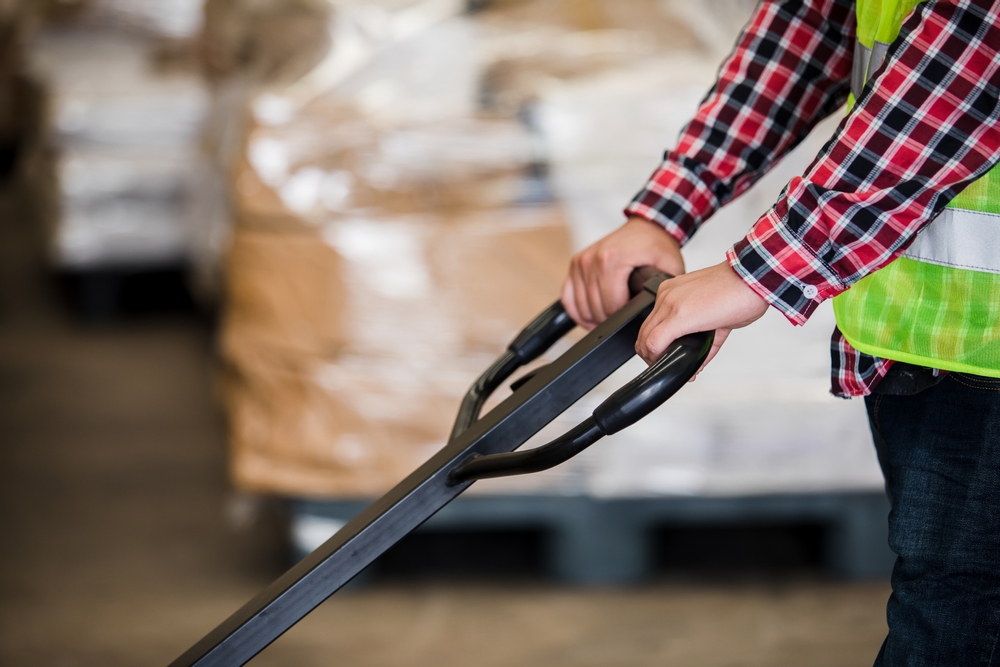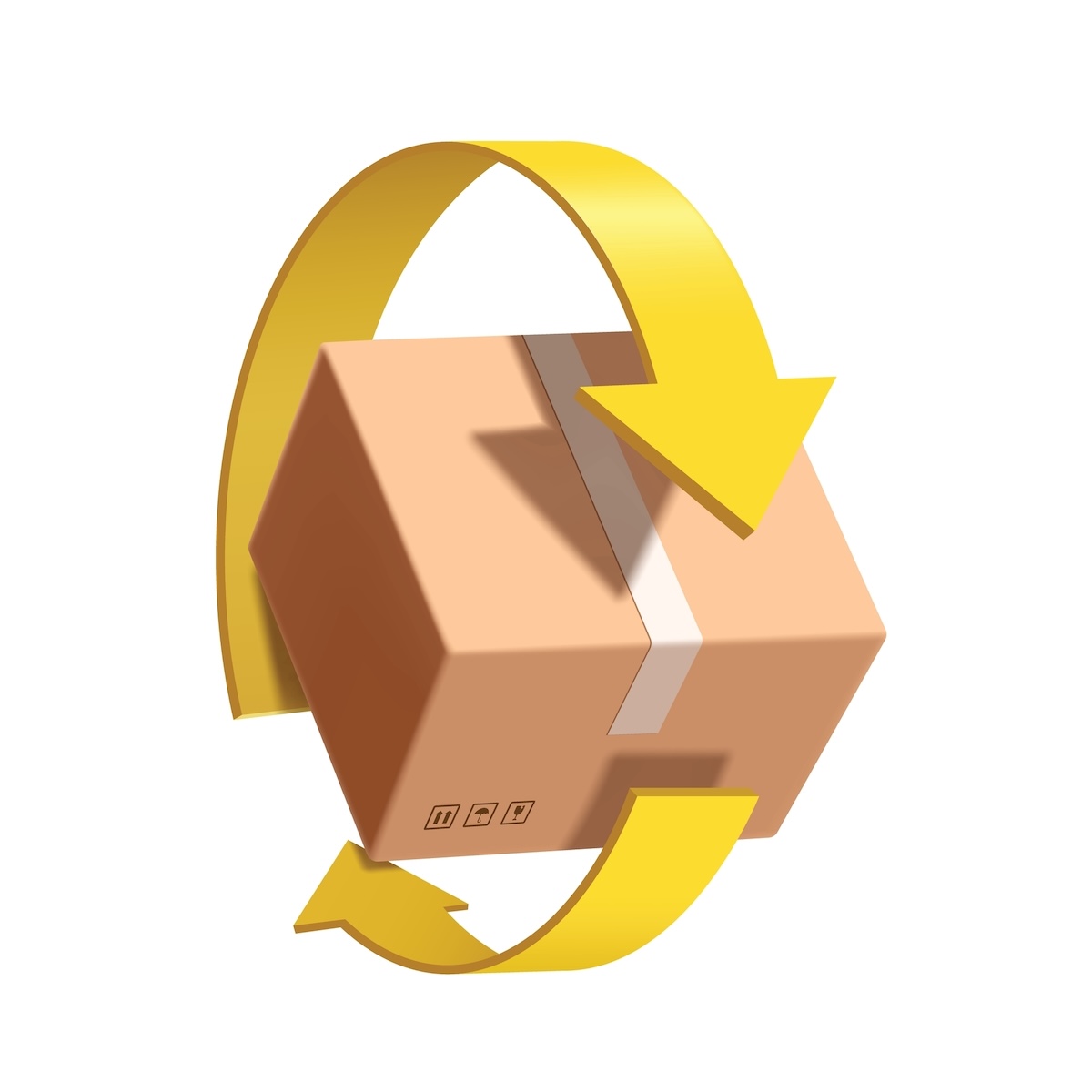Wondering how to efficiently manage returns in your convenience distribution business? Dive into our guide to discover strategies and specialized software solutions that can streamline your returns process and enhance profitability.
Running a convenience store distribution business is no small feat. Every day, you oversee trucks loaded with products leaving your warehouse, making their way to countless retailers. Yet, alongside successful deliveries, you also face the inevitable challenge of product returns. Damaged goods, unsold items, or products that didn’t meet retailer expectations—these returns are a constant in your operation.
If you’re in the convenience store distribution business, you understand the intricacies of managing returns. However, recognizing areas for improvement is one thing, but translating that into actionable strategies is another. In this article, we delve deeper into the nuances of returns management, offering tailored insights and best practices. Our aim? To help you refine your returns process, strengthen retailer relationships, and enhance your profitability.
The Challenges of Handling Returns in the Distribution Industry
Navigating the world of convenience store distribution comes with its fair share of hurdles, and managing returns is undoubtedly among the most intricate. While returns are a routine aspect of the business, they bring along a set of unique challenges that can impact your operations:
- Inventory Discrepancies: Every returned product needs accurate processing. If not handled correctly, defective items might be reintroduced into the inventory system as sellable stock. This can lead to situations where workers, relying on inaccurate inventory data, might attempt to fulfill orders with unsellable stock. Such discrepancies can cause operational delays, further returns, and strained retailer relationships.
- Operational Costs: It’s not just the lost sale that hurts. The act of processing a return—assessing the product’s condition, restocking it, or disposing of it—incurs labor, transportation, and administrative expenses. These costs can quickly add up, especially if your returns process isn’t optimized.
- Retailer Relationships: Your relationship with retailers is built on trust and reliability. A single mishandled return can sow seeds of doubt. Consistently poor returns management can strain these relationships, potentially jeopardizing future sales and collaborations.
- Regulatory Compliance: The convenience store distribution industry isn’t just about moving products. Especially when dealing with regulated items like tobacco, every return must be handled with an acute awareness of the prevailing regulations. Non-compliance isn’t just a risk; it can lead to hefty penalties and tarnish your reputation.
Understanding these challenges is pivotal. It sets the stage for devising strategies and best practices that not only address these issues but also turn returns management into a strength of your business.

Best Practices for Returns Management in Convenience Store Distribution
Navigating the complexities of returns in the convenience store distribution industry requires a strategic approach. While returns are inevitable, they don’t have to be a thorn in your side. By adopting certain best practices, you can transform this aspect of your business from a challenge into an opportunity. Here are some tried-and-true strategies to ensure your returns management process is as efficient and effective as possible:
1. Implement a Clear Returns Policy:
Every distributor should have a clear and concise returns policy. This not only sets expectations for your retailers but also streamlines the returns process for your team. Ensure that this policy is communicated effectively to all stakeholders, from your internal team to the retailers you serve.
2. Invest in Real-time Inventory Management:
With the dynamic nature of returns, having real-time inventory insights is crucial. Tools like CDR’s DAC provide instant updates on stock levels, ensuring that returns don’t lead to overstocking or stockouts. This also aids in making informed purchasing decisions.
3. Prioritize Communication with Retailers:
Open channels of communication with your retailers. Regular check-ins can help anticipate returns, understand the reasons behind them, and even prevent unnecessary returns. This proactive approach can also strengthen retailer relationships.
4. Train Your Team:
Ensure that your team is well-trained in handling returns. This includes understanding the reasons for returns, inspecting returned items, updating inventory, and processing refunds or credits. Regular training sessions can keep the team updated on best practices and regulatory changes.
5. Leverage Technology:
Modern distribution software, like DAC, offers modules specifically designed for returns management. These tools can automate various aspects of the process, from generating return authorization documents to adjusting inventory levels and processing credits.
6. Regularly Review and Analyze Returns Data:
By regularly reviewing returns data, you can identify patterns, such as frequent returns from a particular retailer or issues with specific products. This data-driven approach can guide improvements in your distribution strategy and product offerings.
7. Stay Updated on Regulatory Changes:
For distributors dealing with regulated products like tobacco, it’s essential to stay updated on any regulatory changes related to returns. This ensures compliance and avoids potential legal complications.
8. Foster a Culture of Continuous Improvement:
Returns management isn’t a static process. As the industry evolves and as you gather more data, continuously look for ways to refine and improve your returns process. Encourage feedback from both your team and your retailers to drive these improvements.
By adopting these best practices, convenience store distributors can not only manage returns more efficiently but also turn this often-challenging aspect of the business into an opportunity for growth and strengthened retailer relationships.
In the next section, we’ll explore some common mistakes to avoid in returns management. But before we delve into that, it’s essential to remember that mistakes are a part of growth. By recognizing and addressing them, distributors can further refine their operations and achieve greater success.
Avoiding Common Pitfalls in Returns Management
While best practices can guide you toward an efficient returns management process, it’s equally crucial to be aware of common mistakes that distributors often make. Recognizing these pitfalls can help you proactively avoid them, ensuring a smoother operation:
Lack of Clear Return Policies: Without a well-defined return policy, both your team and your retailers can be left in the dark, leading to confusion and potential disputes. Ensure your policy is clear, concise, and easily accessible.
Ignoring Data Analytics: Simply processing returns without analyzing the reasons can mean missed opportunities for improvement. Regularly review return data to identify trends, problematic products, or retailer behaviors that need addressing.
Inefficient Communication: Poor communication with retailers can exacerbate return-related issues. Establish open channels of communication to address concerns promptly and maintain strong retailer relationships.
Overlooking Training: Your staff should be well-versed in handling returns efficiently. Regular training sessions can ensure everyone is on the same page and aware of best practices.
Not Adapting to Changes: The distribution industry is dynamic. Whether it’s regulatory changes, market shifts, or evolving retailer needs, staying adaptable is key to managing returns effectively.
By being aware of these common pitfalls and actively working to avoid them, you can ensure a more efficient and retailer-friendly returns process.

Implementing an Efficient Returns Management System: A Step-by-Step Guide
The process of refining your returns management can seem daunting, but breaking it down into actionable steps can make it more manageable. Here’s a guide to help you streamline your returns process:
1. Assess Your Current System:
- Begin by evaluating your existing returns process. Identify bottlenecks, inefficiencies, and areas that frequently cause disputes or confusion.
- Gather feedback from your team and retailers. Their insights can provide valuable perspectives on where improvements are needed.
2. Draft a Clear Returns Policy:
- Collaborate with key stakeholders to draft a comprehensive returns policy. This should cover criteria for returns, timelines, and responsibilities.
- Ensure the policy is easily accessible to all relevant parties, from your warehouse staff to the retailers.
3. Invest in Technology:
- Consider adopting software with a returns management module that can automate and simplify the process.
- An enterprise system like DAC that includes real-time financial record keeping will ensure accuracy.
4. Train Your Team:
- Organize training sessions to familiarize your team with the new processes and tools.
- Emphasize the importance of accurate documentation and prompt communication.
5. Establish Communication Channels:
- Set up dedicated channels for retailers to raise concerns or queries related to returns.
- Regularly check in with retailers to gather feedback and make necessary adjustments.
6. Analyze and Iterate:
- Regularly review return data to identify patterns and areas for improvement.
- Consider holding quarterly reviews to discuss the returns process and make necessary refinements.
7. Stay Updated:
- Keep abreast of industry trends, regulatory changes, and best practices related to returns management.
- Attend industry seminars, workshops, or webinars to gain insights and learn from peers.
By following this guide and regularly revisiting each step, you can ensure that your returns management system remains efficient, retailer-friendly, and adaptable to the ever-changing landscape of the convenience store distribution industry.
Leveraging DAC for Streamlined Returns Management
In the dynamic world of convenience store distribution, having a robust software solution is not just a luxury—it’s a necessity. This is where DAC comes into play.
Why DAC?
- Integrated Returns Module: DAC’s Returns Management module is specifically designed for distributors in the convenience store sector. It ensures that only items purchased from your company are accepted for credit, streamlining the returns process and reducing potential disputes.
- Real-time Data Analytics: With DAC, you can instantly analyze return patterns, identifying trends and areas that need attention. This data-driven approach allows for proactive decision-making and continuous improvement.
- Seamless Communication: DAC fosters open channels of communication between distributors and retailers. Whether it’s addressing concerns, clarifying return policies, or providing updates, DAC ensures that everyone stays informed.
- Training and Support: Implementing a new system can be challenging, but with DAC, you’re not alone. We offer comprehensive training sessions and continuous support to ensure your team is well-equipped to handle returns efficiently.
- Adaptable to Industry Changes: DAC is designed with the ever-evolving convenience store distribution industry in mind. Whether it’s regulatory shifts or market changes, DAC is built to adapt, ensuring you’re always ahead of the curve.
Incorporating DAC into your returns management process not only streamlines operations but also strengthens retailer relationships and enhances profitability. It’s not just software—it’s a solution tailored for the unique challenges and opportunities of the convenience store distribution sector.
See CDR’s DAC Delivery Manager Module for convenience store distributors in action.
Conclusion: Elevate Your Returns Management Process
In the fast-paced world of convenience store distribution, returns management can often become a complex challenge. However, with the right strategies, best practices, and tools in place, it’s possible to transform this challenge into an opportunity. By avoiding common pitfalls, implementing efficient processes, and leveraging the power of advanced software solutions like DAC, distributors can not only streamline their returns but also enhance retailer relationships and boost profitability.
Remember, every return is a touchpoint with your retailer and an opportunity to reinforce trust and reliability. Embrace the best practices, steer clear of common mistakes, and consider how DAC can be your partner in achieving excellence in returns management.
Ready to Elevate Your Returns Management?
Discover how DAC ERP can streamline your processes and enhance your retailer relationships. Contact us to learn more today.
Frequently Asked Questions
What makes returns management particularly challenging for convenience store distributors?
Returns in convenience store distribution bring unique issues such as inventory discrepancies, high processing costs, regulatory compliance (especially for tobacco products), and the potential for damaging retailer relationships if mishandled.
What are the best practices convenience distributors should follow for returns management?
Key practices include having a clear returns policy, using real-time inventory monitoring, prioritizing retailer communication, training your team, leveraging distribution-specific software, regularly analyzing returns data, staying compliant with regulations, and fostering continuous process improvement.
How can an ERP like CDR’s DAC improve returns processes?
DAC’s Returns Manager automates documentation like credit memos, integrates returns handling with sales/order systems (DAC Connect, DAC Express), and ensures accurate and timely credit processing—helping reduce errors, delays, and waste while boosting efficiency and customer trust.
Why is returns data analysis important, and how should distributors leverage it?
Reviewing returns data helps uncover patterns—such as repeat issues from specific retailers or products—that signal where to tweak logistics, product quality, or retailer communications. Using data-driven insights allows you to prevent future returns and enhance profitability.
What frequently made mistakes should distributors avoid in returns management?
Distributors should avoid unclear returns policies, neglecting data analysis, poor communication with retailers, under-training staff, and failing to adapt processes as regulations or business needs evolve.

